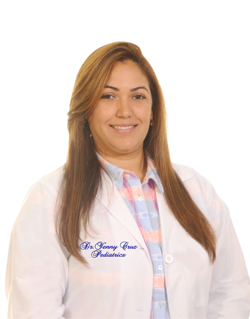
Allergies in children arise from issues with the immune system. Although the human body usually defends itself against detrimental agents such as viruses or bacteria. But it can erroneously initiate an aggressive response against harmless substances such as dust, mold, or pollen.
Typically, allergens do not threaten the body, but children with allergies experience an immune response that perceives them as harmful. It produces immunoglobulin E (IgE) antibodies, which bind to mast cells, a specialized cell type.
When allergens attach to the antibodies present in the immune system, it triggers the release of histamine and other chemicals, leading to an allergic reaction. The severity of the allergic reaction may vary from mild to severe and may depend on the type of allergen involved. In severe cases, an allergic reaction can involve the entire body.
Symptoms of Allergies in Children
Allergic reactions can occur in various parts of the body, such as the skin, nose, lining of the stomach, eyes, sinuses, throat & lungs, where cells of the immune system typically work to combat inhaled or ingested germs, as well as skin irritants. Common symptoms of allergic reactions include:
Stuffy nose, Itching, sneezing, or runny nose & itching in ears or roof of the mouth.
itchy, red, watery eyes.
Red, itchy, dry skin.
Hives/itchy welts.
Itchy rash.
Asthma symptoms like shortness of breath, wheezing, coughing.
A severe allergic reaction (anaphylaxis). It can cause trouble breathing, low blood pressure, diarrhea, vomiting, fainting/death.
Causes of Allergies in Children
Numerous factors can incite allergic reactions, but the most prevalent culprits or allergens include:
Tree, grass & weed pollens
Natural rubber latex
Molds
Dust mites
Animal dander, urine & oil from the skin
Foods
Feathers
Medicines
Bee stings
Pests like cockroaches & mice
Children are at Risk for Allergies
Allergies can impact anyone, irrespective of age, race, gender, or socioeconomic status. While allergies tend to be more prevalent in children, they can occur at any age & resurface even after being in remission for several years.
Although the exact cause of allergies within families is still unclear, there appears to be a genetic component to their development. Furthermore, allergy symptoms typically manifest gradually over time.
Parents Should Call for Doctor - Starlight Pediatrics
If your child is displaying indications of an allergic reaction, the symptoms may comprise of:
Sudden raised, red areas (hives) over their body.
Swelling of the mouth, throat, lips, or tongue.
Trouble breathing.
Passing out (losing consciousness).
Diagnosis of Allergies in Children
Initial Step
The initial step in managing your child's allergies involves establishing an accurate and comprehensive diagnosis. If you suspect that your baby has an allergy to a particular substance, skin testing can help to confirm it.
Skin Testing: Confirming Allergies Through Liquid Extracts
During this examination, liquid extracts of potential allergens are placed on the skin's surface via a pricking device. If the allergen is responsible for the allergic reaction, the skin in the test area will become inflamed and red. Generally, skin testing is a faster diagnostic method than blood testing.
Intradermal Testing: Injecting Allergens for Venom Testing
In certain circumstances, doctors may perform intradermal testing, which involves injecting the allergen being tested for beneath the top layer of our skin. For instance, if a child is suspected of having an allergy to stinging insects, such as bees or wasps, she might undergo venom testing. In this scenario, histamine is applied to the skin, followed by a small amount of venom injected under the skin's top layer. If a red spot appears at either stage, it indicates that the child is allergic to the venom.
Analyzing IgE Antibody Levels for Allergy Assessment
Assessing the concentration of specific IgE can aid in determining if your baby has allergies by analyzing the IgE antibodies level in their bloodstream. In response to allergens, the body often produces IgE antibodies, which means elevated IgE antibody levels suggest your child has allergies. Following any of these tests, your baby's physician will evaluate and discuss the findings with you to devise an optimal treatment strategy for your child's allergies.
Book an Appointment With Starlight Pediatrics Today!
At Starlight Pediatrics, we believe that good health starts with a partnership between the patient, the parent, and the healthcare provider. We are committed to providing the highest level of pediatric care to children with allergies. Besides, we ensure that you have the information and support you need to make informed decisions about allergies in children.
Contact us now to get more information and details about pediatrics in Holly Springs.


